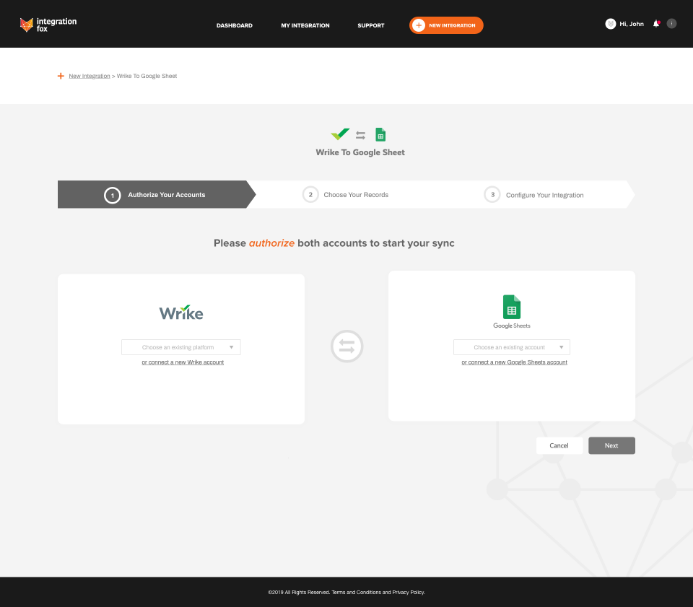Manual data processing is still a huge part of many business processes, which is concerning because of the risks associated with it, and the fact that so many manual tasks are now easily replaceable with automated solutions. That being said, you might be surprised at how easy it is for mundane, data processing tasks to take hold of your workforce.
Here’s a scenario - you might have a bunch of information in one system that you need to be replicated in another system. You want to get it done today, and it doesn’t seem like too much data, so you assign one of your team to spend a small chunk of their day manually entering the data from one system into the other. Problem solved.
Fast forward to a few months later - your business has been doing well so that seemingly simple data entry task has grown into a full-time job. The employee you assigned to the task is getting bored and frustrated by how tedious it is and they’ve started making errors that are really impacting your business.

It’s easy to get bogged down in repetitive tasks in the workplace that will leave your staff feeling like cogs in a machine. Therefore it’s important to identify how much time you’re losing to manual processes that can be automated, so that you can reduce manual work - freeing up your team to think big.
What’s the main difference between a manual process vs. an automated process?
If you’re familiar with the concept of working smarter, not harder - you’ll know that there’s a big difference between ‘busy work’ and ‘smart work.’ Automation is all about working smarter, instead of a manual process that requires you to work harder.
How to Identify Manual Data Processing in Your Business
- Start by looking at your data and the processes around it. Establish all the touch-points where a human needs to action something for a workflow to continue.
- Draw out a map of your systems and find out where the gaps are - look for opportunities where platforms could be talking to each other with an integration that bridges the gap.
- Talk to your employees - ask them what their most time-consuming tasks are, why they do them, and whether they think there’s a better way.
- Look at individuals who have import and export data permissions within your applications and understand if these can be removed, and if not why not
Before we dig into the problems with manual data processing, there’s something important to understand. Automation doesn’t replace people, it replaces actions. As you are introducing the idea of automation to your team, you may encounter some skepticism or concern around being ‘replaced,’ and you might even find team members underplaying how much time they spend on manual tasks, for fear of having their busy work taken away from them.
Communicate with your team that automating processes isn’t going to take all their work away from them - it’s going to improve the way they do work, reduce risk related to the manual manipulation of data and give them more time to work on the things that matter.
The problems with manual data processing - and how automation solves them
Problem: It’s prone to human error
Every keystroke and every click is subject to the one thing humans are pretty good at - mistakes. From entering data into the wrong cell, to making a typo in an email address on a CRM record, little mistakes can have larger repercussions down the line.
Automation’s solution: Improved data integrity
Automation takes away the risk of human error, so you can trust that data quality is consistent across platforms. Automated processes are more reliable because you know your data will be migrated without any mistakes.
Problem: It’s slow
Repetitive tasks at work are time-consuming and humans don’t work at one consistent speed all day. They need to take breaks, and they can get bored, distracted or stressed - decreasing productivity.
Automation’s solution: Save time
Automation is fast and you’ll have real-time sync between platforms, so you aren’t waiting on a busy employee to get the job done and suffering from a bottleneck in your process. Automation works at a consistently high rate, and doesn’t need to take coffee breaks.

Problem: It’s resource-draining
Manual data processing requires people, and people can be expensive when your business is growing. You’ll need to throw money into recruiting, acquiring hardware, and training your new staff. In the long-run, investing in smart automation is going to be less expensive.
Automation’s solution: Limitless growth
Once automation is in place, it’s easily scalable and will grow with your business. Automation software can handle larger workloads than your team members, so you won’t be limited by your team’s head count.
If automation is so great, can I just automate everything?
All of these problems point to the truth - automation is going to save you time, money and headaches. BUT there is an important thing to remember as you head into the world of automation: automation does only as you tell it. If you give a broken or faulty command to an automated process, it will create more work than it’s saving you by efficiently replicating your inefficient operations.
Automation cannot think for itself or decide to complete a task, and there’s no flexibility, so it won’t solve problems on its own, or recognise anomalies or broken processes. This is where your people come in. Your people are going to become your automation experts, making sure that the automation is doing all the heavy-lifting data work, so that they can get on with more important stuff.
What are the other benefits of automating a manual process?
There are plenty of other benefits to putting automation into your business:
- Better data reporting: you’ll be equipped with better insights for making business decisions
- Powerful data transformation: automation will not just be saving your work from errors, but improving the quality of your data as you go
- Security and peace of mind: you’ll have a history of every synced field, as well as 24/7 monitoring to ensure everything runs smoothly.
Sounds like a win-win situation!
Is it time to free up your team to perform higher value work AND have more accurate data processing? Talk to us today about how we can help you stop burning time maintaining multiple systems.
What are some of the key pain points you've found with manual data processing in your business?






